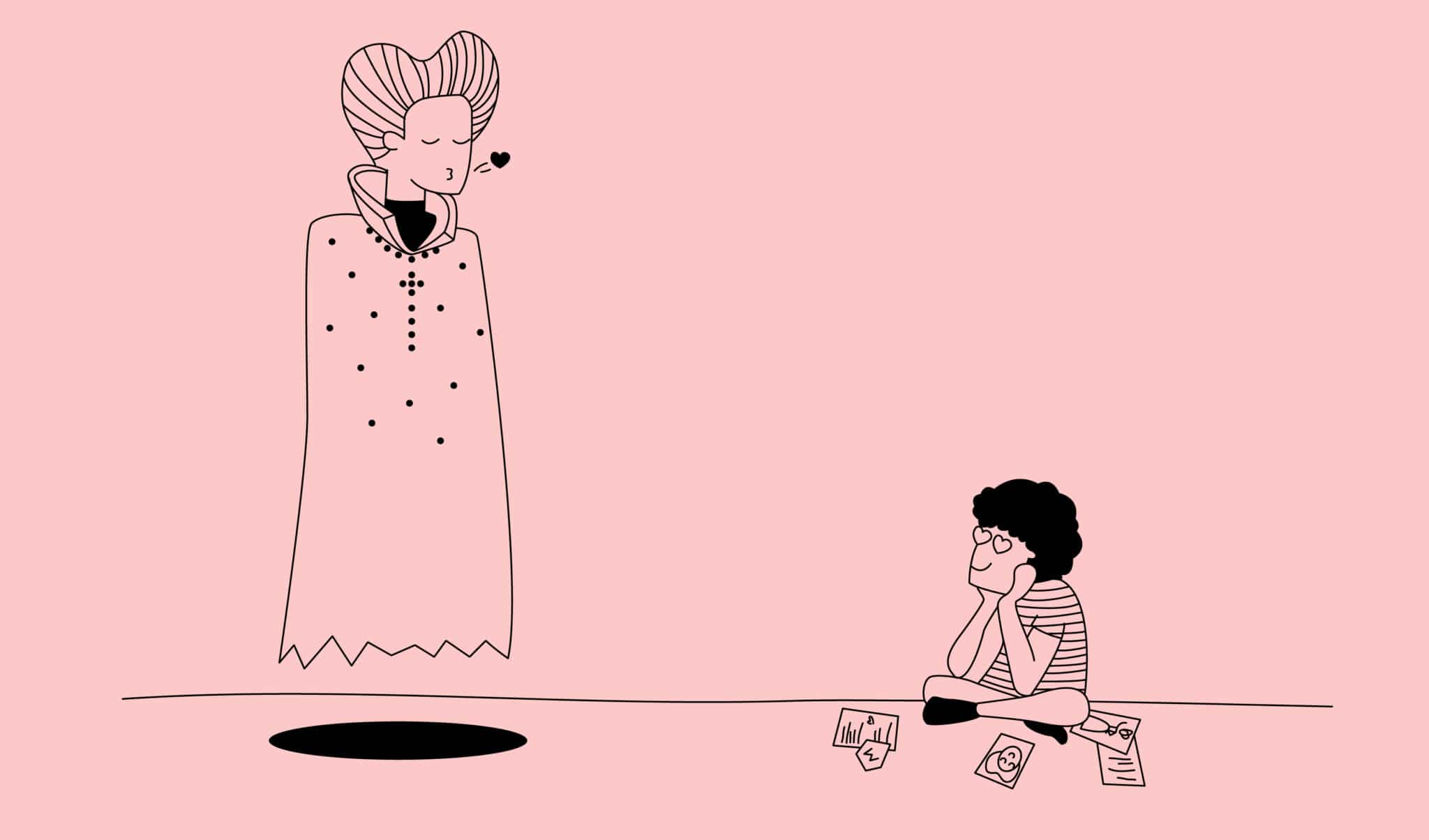Gay BFFdom with Mary Queen of Scots
Gay BFFdom with Mary Queen of Scots

“You haven’t betrayed your nature.”
So says Mary Stuart, Queen of Scots, to her private secretary David Rizzio, shortly after he has shagged her husband in the latest film about her life, Josie Rourke’s Mary Queen of Scots. Actress Saoirse Ronan does a passable Scottish lilt, and he weeps into her skirts.
It’s the sort of thing I’d have loved Mary Stuart - who died in 1587 - to have said to me, had she been around in the late 1990s, when I was but a wee laddie. I was confused about many things but full to the brim of facts about her. We did a school history project on her when I was eight, sandwiched between other hot topics like the Egyptian pyramids and the Amazon rainforest, and I was soon obsessed. I brought up Mary in every conversation I could. I fantasised about her life and death, how things could have been different if she hadn’t married, or had ruled France, or had invaded England.
I painted her in art class. Tongue hanging out with concentration, I slopped on so many layers of poster paint that the paper curled and cracked. I worked from a portrait of her in mourning robes, her eyes narrow and sad. My Mary ended up a bit green, a bit cross-eyed, but my teacher was still magnanimous enough to stick her on the wall.
I tried to summon Mary’s ghost at the ruins of Linlithgow Palace, her birthplace. I sat amongst the old stones of what I hazarded could have been a bedroom, while the rest of the kids on the school trip were doing the treasure hunt. She didn’t appear.
More than anything, I wanted to be her David Rizzio.
Rizzio had a foreign surname like me and I imagined him bringing a sparkle of la dolce vita to our dour land of Presbyterianism and tatties. I recognised his close friendship with Mary. All my best pals were girls: Lorna, Amy, Sophie. While other boys kicked footballs, or dug for dinosaur bones by the bins and bleeped about galaxies far, far away, I scampered off to make up games with the girls. We formed circles, skipped, chanted, chased each other in the guise of wolves or cowboys or thunderstorms. To me, it made perfect sense for a girl to make a boy her confidante. Rumours swirled Mary and Rizzio were lovers -- but that’s what people always said when friendship crossed the primary school gender line.
And Rizzio’s friendship with Mary had another crucial element that fired my fancy: a violent end. Mary’s jealous husband, Lord Darnley (a.k.a. Darn-what-a-bad-husband) and a group of disgruntled lords attacked one night, while Rizzio and Mary were playing cards. They stabbed him to death, leaving 56 wounds in his body. You can still see the dark brown bloodstain Rizzio left on the floorboards of Holyrood Palace, which legend has it no amount of scrubbing or modern chemicals will remove.
It marked a turning point for Mary. Most historians agree that if she wasn’t the mastermind, she was at least happy to help have her husband Darnley to be murdered in his turn. The ensuing scandal eroded her control over Scotland. She eventually abdicated and fled to England, where she was locked up for 20 years and at last beheaded.
While Mary’s ghost never manifested for me, we did dress up my pal Sophie as a headless queen for the Halloween disco, with a papier maché head and paper doilies for the bloody ruff. As children, we’re less abashed about relishing all the grisly details. We’re more open in our fascination for phantom stains and detached heads, those bits of people that move around and leave trails in the real world. Not to mention how forthcoming we are about our hopes of being haunted.
20-odd years later, I sat down to watch the new MQS film with friends in Berlin. This Queen of Scots is sharp. She snaps at the buffoonish, querulous menfolk of her court, rolls her eyes at their skulduggery and rides astride her horse into battle, with an eye on her cousin’s southern throne. She captures contemporary fascinations with women in roles of power: less tragic green queen, more Daenarys Targaryen, Mother of Highland Coos.
Rizzio appears in the film too and he looks pretty magnificent: all flowing locks and spicy accent, and not a lot of secretarial work. He tries on a dress and falls about in fits of giggles and, as I mentioned, shags Mary’s husband on their wedding night.
This Rizzio ends up something of a woodland creature, basking in Mary’s tolerance, but the line I might have liked to hear as a child made me wince. “You haven’t betrayed your nature” sounds an awful lot like a Renaissance riff on “Baby, you were born this way”. It’s the kind of patronising, queer affirmation that feels like a homework assignment.
I applaud the intention. Female agency and queerness can be so easily airbrushed from our reading of history. Restoring them helps us see how norms shift and how the past might not be as familiar as we think. But the strange, mad splendour of monarchs and their attachments vanishes here in a hollow trumpeting of 21st-century values. Other films have done it so much better: the lovestruck king in Derek Jarman’s Edward II, or the vicious, discombobulating majesty of The Favourite, give nuanced and complex insights into queer relations of ruler and subject.
Maybe I have a grudge. Mary and I have history, after all, and this anaemic film made me long for gristle and fantasy.
The bloodstain remains, and she might yet appear, my tragic cross-eyed queen.
Get DADDY in your Inbox
Stay in the loop by subscribing to our newsletter